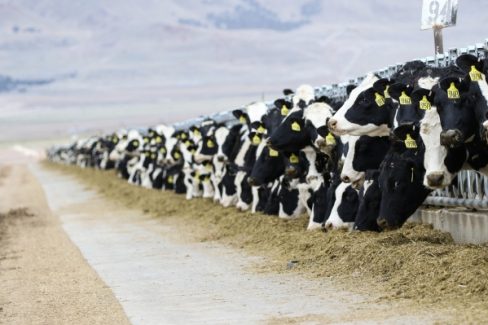Most dairies with a successful reproductive management program are quick to give credit to their reproductive team for the dairy’s accomplishments. But thriving teams do not happen on their own.
A dairy farm can have employees who are a team of people, a group of people or just a collection of individuals, explains Dr. Bernie Erven, agriculture economics professor emeritus at The Ohio State University. To help understand what this means, consider these definitions:
Team: Several people who work together as a cohesive unit to achieve specific, shared goals Group: Several people who have common goals, but work independently without depending on each other for their success.
Individuals: Several individuals who work independently to accomplish their individual goals without depending on each other for their success.
Dairies execute positive results with each of these personnel management strategies every day.
Coordinate Efforts.
Building effective teams can result in significant payoff—both in herd performance and profitability— which is why many owners and managers tend to gravitate toward creating that structure.
A properly functioning team means that specialists can consolidate their expertise into a single, coordinated effort to help a dairy owner be more successful, say experts at Penn State University. Together you reduce work, improve efficiency, increase profits and achieve success for all involved. Dairies desiring a strong team have to identify what a team’s role will be, who will make best candidates (including family and non-family team members) and, finally, provide the right training and leadership to accomplish goals.
That doesn’t mean building a productive, effective team is quick or easy. Teams take work and dedication—to find the right people, to get everyone on the same page and to keep them performing at a high level.
“Successful teams will go through a continual cycle of defining needs, setting goals, tracking progress, achieving/maintaining goals and evaluating success,” says Robert Goodling, Jr., Penn State University Animal Science extension associate.
“In addition, producers must be engaged in the process for a team to be successful,” he adds. “A producer must be willing to take action or willing to try new things or the team will quickly grind to a halt.”
Signs of Good Team Dynamics.
How do you know if your reproductive team is on the right track? Herd performance is one obvious measure. But there’s more to a successful team than numbers and benchmarks indicate.
First and foremost, open communication among team members is essential. “Everyone must have the same voice at the table,” says Goodling, who has served as a facilitator for a number of dairy teams.
That doesn’t mean everyone must always agree; it does mean that everyone must be allowed to be heard and have the freedom to express opinions in a constructive manner. If communication breaks down, the team will fail.
A productive team also constantly sets and resets goals and objectives as conditions warrant. “They are not simply meeting because they always meet on a certain day at a set time,” says Goodling. “The team has a structured agenda and a time limit.”
Here are four signs that a team is moving forward:
• Goals/objectives are achieved
• ALL members are engaged in discussion
• Producers are utilizing the information provided by the team • Teams quickly move through stages of adaptation
One additional consideration: Do you celebrate success as a team? Whether it’s achieving annual pregnancy rate goals, reducing calving interval or some other metric important to your operation, be sure that your team marks its accomplishments. “Even the little celebrations make a difference,” says Goodling.
7 keys to a successful team
Dr. Bernie Erven, agriculture economics professor emeritus at The Ohio State University offers the following guidelines for team members, managers and cooperators to help cultivate team performance:1
1. Establish urgency. Have a driving cause, issue or need.
2. Pay particular attention to early planning meetings and actions.
Remember that most groups never reach the norming stage
of team development.
3. Set some clear rules of behavior. Those rules will vary
from team to team. Examples include: holding all
scheduled team meetings, starting meetings on time,
volunteering to help each other with disagreeable jobs,
saying thank you, and not talking about problems
with neighbors and friends.
4. Set and seize upon a few performance-oriented tasks and goals.
5. Make them SMART: Specific, Measurable, Attainable, Rewarding, and Timed.
6. Challenge each other with fresh facts and information.
7. Spend lots of time together. There is no substitute for team caring about its members and each team member caring about the welfare of the team. Celebrate birthdays, go to a baseball games together, have frequent team meetings, and have a daily “coffee break” together.
8. Exploit the power of positive feedback, recognition and reward. Celebrating successes is time well spent.
Managing Metrics
Just as dairy owners and managers can get lost in all of the data that’s available to track and measure herd performance, so can dairy teams.
“The key is to measure the metrics that are going to give you the information as to whether you are meeting the team’s goals and objectives,” suggests Robert Goodling, Jr., Penn State University Animal Science extension associate. And keep in mind that those metrics can and should change over time.
“For example, you may need to shift from spending time
on pregnancy rates to monitoring heat detection more closely,” he says. “Probably one of the toughest challenges for veteran teams is not putting some metrics on the shelf periodically.”
Also consider sending tracked metrics to team members prior to the meeting so they have time to digest the contents before the session. This should help facilitate discussion and action plans.
Source: Dairy Cattle Reproduction Council




